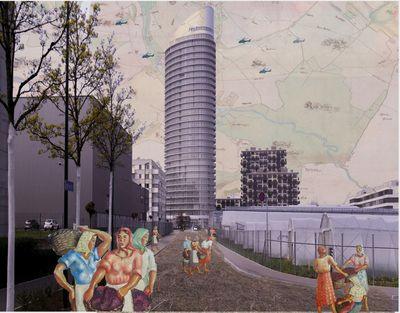DübendorfA Case for Communal Greenhouses: Protecting Agricultural Land with Communal Urban AgricultureClaudia da Silva Bütikofer, Martino Galli, and Jennifer Braghetti
Dübendorf is a city located in the agglomeration of Zurich. In the last century, it experienced profound social changes and transformations of its urban and rural fabric. What was once a village of about a hundred inhabitants now counts over 30,000 people. This urban expansion was only possible at the expense of agricultural land, leaving farmers struggling with the remaining land.
In order to remain competitive in the agricultural sector, some farmer families have introduced greenhouses in their practices. Greenhouses allow for an increase in productivity, but they have a high energy consumption. In addition, greenhouses are often built on agricultural land but operate with substrate or elevated cultivation systems which results in a waste of fertile soil.
Designing greenhouses in the city would allow small farmers to regain competitiveness, to avoid the occupation and destruction of fertile land, to bring the workforce closer to work, and to connect agriculture with the city.
